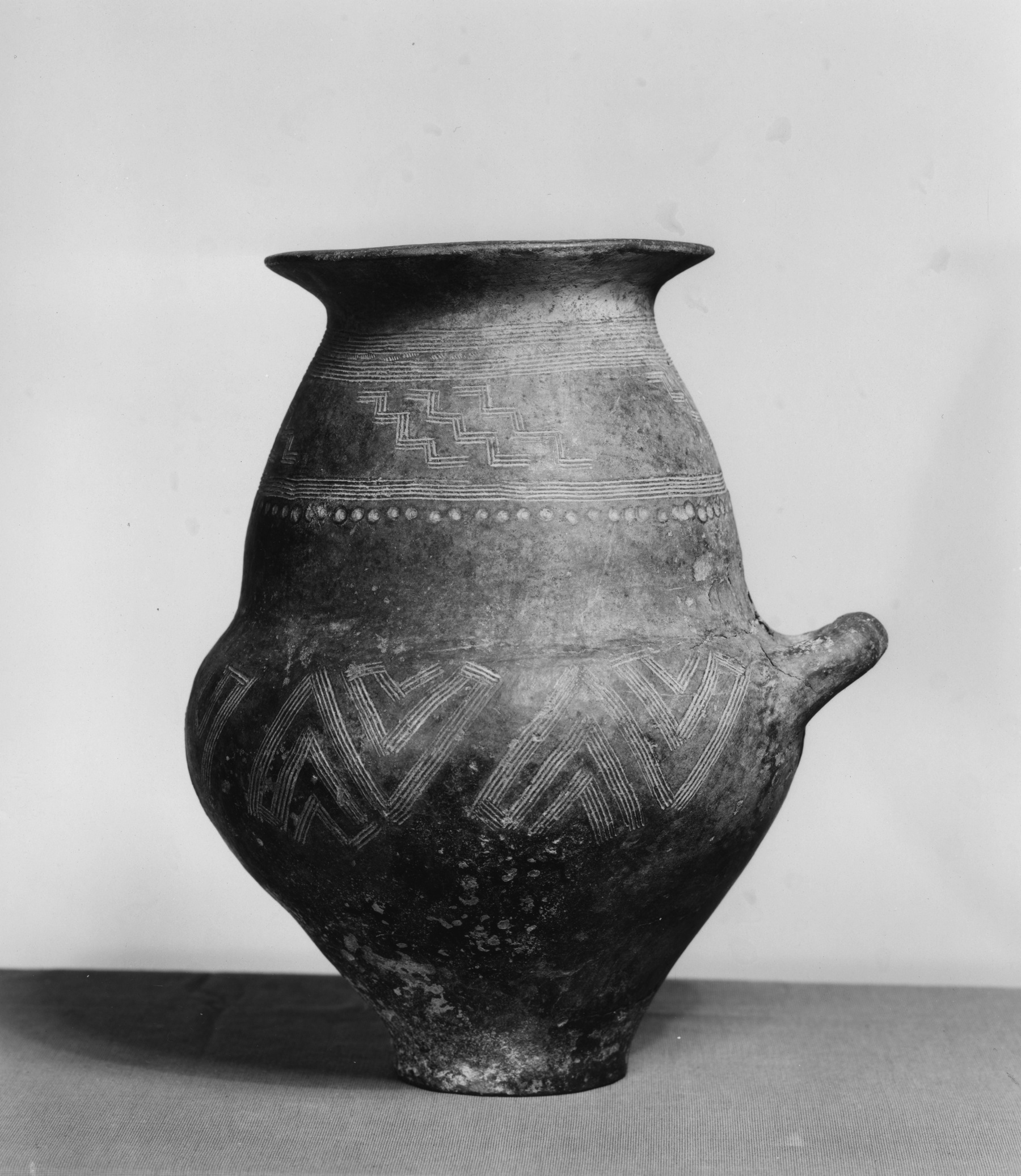Biconic Ash Urn
(Roman Empire )
Biconic ash urns are a common form in Iron Age Italy, getting their name from their resemblance to two cones placed base to base. This urn has a narrow base that gradually expands outward into a round body with a single handle, typical of this form, and while the top cone tapers inward, it is molded convexly. The urn is crowned with a wide, flared lip. It is decorated with geometric patterns that look as if they were incised with a comb-like tool. Chevrons circle the body, while the neck is circled by a band of incised dots, above which repeats triads of a staircase pattern. Just beneath the lip, a series of horizontal lines wrap around the urn. An urn of this type was usually covered by an inverted bowl.
From the 9th through 8th centuries BCE, Villanovan culture flourished in northern and central Italy. There are no written sources from this period, but archaeological evidence offers a glimpse into the everyday life of Early Iron Age communities in Italy and reveals Villanovan culture’s many different ethnic, cultural, and political influences. The development of this rich culture led to the formation of the Etruscan cities that dominated central Italy beginning in the 7th century BCE.
Provenance
Provenance (from the French provenir, 'to come from/forth') is the chronology of the ownership, custody, or location of a historical object. Learn more about provenance at the Walters.
[Excavated at Caere, about 1896]; Olcott [date and mode of acquisition unknown]; The Brooklyn Museum, New York [date and mode of acquisition unknown]; Walters Art Museum, 1943, by purchase.
Geographies
Italy, Cerveteri (Caere) (Place of Origin)
Measurements
15 3/4 x 12 5/8 x 11 1/8 in. (40 x 32 x 28.2 cm)
Credit Line
Museum purchase, 1943
Location in Museum
Accession Number
In libraries, galleries, museums, and archives, an accession number is a unique identifier assigned to each object in the collection.
In libraries, galleries, museums, and archives, an accession number is a unique identifier assigned to each object in the collection.
48.1872




